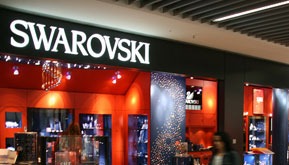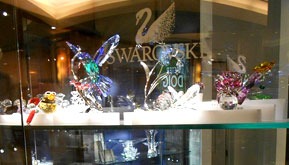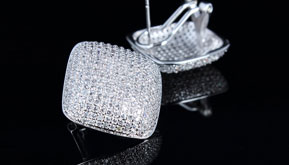If a loved one would tell you that you will soon receive a sterling silver necklace studded with Swarovski crystals, you would surely be thrilled to see your luxurious gift. The name ‘Swarovski’ itself would spark excitement, as it has gained the reputation of being brilliant, original and high class. Iconic brands like Chanel, Balenciaga and Christian Dior are using these crystals in making jewelry and other fashion items. People all over the world cannot resist a beautiful Swarovski jewelry.

In 1892, he was able to register a patent for his invention that could cut jewelry stones perfectly. It was more precise than the manual cutting jewelers were doing that time. After three years, he moved to Wattens, Austria, to make use of Rhine River as a source of energy to run his machinery. Because of this, the name “rhinestone” was born.

In 1899, Swarovski used the edelweiss flower in its logo to symbolize alpinism and purity. By 1913, no more glass was imported from Bohemia – all crystals were already Austria-made.
When the World War I broke out in 1914, Daniel’s sons Fritz and Wilhelm were called for military service. Production of crystals stopped in 1915. After the war, Swarovski founded Tyrolit, a major division of the company that manufactures tools for grinding, drilling, sawing and dressing, and supplies tools and machines.
During the 1920s, Swarovski crystal started to be in high demand in fashion and dance. The company also experienced low times where production ceased again, such as during the Great Depression and World War II. However, distribution in the US continued with the help of Swarovski’s family friend, Ernest Lowenstein.
In 1935, Wilhelm Swarovski created a customized pair of binoculars. Fourteen years later, his creation led to the official establishment of Swarovski Optik, which produced high precision optical instruments such as telescope and binoculars.

The company also founded another manufacturing division in the 1950 – the Swareflex. It creates reflective and luminous road markings, and it eventually became a leader in road safety reflectors after quite some time.
Daniel Swarovski passed away in 1956 at the age of 93. During that same year, Swarovski develop the Aurora Borealis (AB) effect, making crystals bear a rainbow appeared on the surface. The Crystal AB was used by designer Christian Dior for his collections. Later on, the company developed other coatings, including Crystal Transmission, Aurum, Volcano, and Dorado.
The 1970s was a successful era for the Swarovski company. During the decade, Swarovski crystal figurines were created as souvenirs for the 22nd Winter Olympic games. “Moodstone,” the crystal that changes its color depending on the mood of the person wearing it, was launched by the company in 1972. The company pioneered in providing and selling machine-cut zirconia to the jewelry industry in 1976. On the same year, Swarovski started to use the Block SC Logo on the Silver Crystal product line. This was later replaced with a swan by 1988, and this logo was still being used today.
By 1987, the silver crystal figurines were released on the market, sparking a worldwide interest in collecting them and leading to the creation of the Swarovski Crystal Society.

In 2006, the Crystallized Swarovski Elements was launched. It was also the year when Signity was created for their semi-precious products. A year after, the company’s lighting business launched Schonbek Worldwide Lighting, the provider for lighting products with crystal architecture such as chandeliers.
Nowadays, the Swarovski company is still purely family-owned. The reason behind its success is that the fourth and the fifth generation of the Swarovski family management still embodied and respect Daniel Swarovski’s excellent business principles and values.

